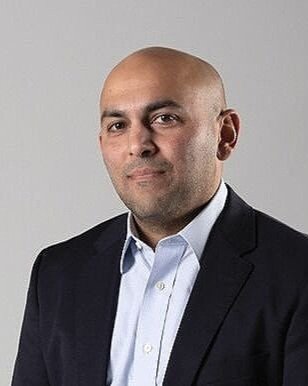Is the Opioid Epidemic Really Ending?
/By Dr. Charles LeBaron
From all the self-congratulations by outgoing Biden administration officials about a 15% decrease in overdose deaths last year, one might conclude that the opioid epidemic is coming to an end. However, drug overdoses remain the #1 killer of adults aged 15 to 45, causing more deaths than automobiles and firearms combined.
So even if this “disappearing epidemic” continues at its current pace – about 98,000 fatal overdoses annually -- nearly a million Americans will die of overdoses within the next ten years.
The carnage is taking place amid a startling paradox: many severely ill persons with a clearly legitimate need for pain control have grave difficulties obtaining opioid medications adequate to make their existence less of a living hell. This worst-case scenario is the legacy of past policy failures – failures that need not be repeated, if incoming Trump administration officials can take a moment to consult our history and apply its lessons.
In the 1990s, as has been extensively chronicled, large pharmaceutical companies began aggressively promoting proprietary opioid preparations. By the mid-2010s, the United States, with 5% of the world’s population, was estimated to consume 80% of the world’s opioids. For Americans recovering from surgery, 91% received opioids, compared to just 5% in the rest of the world for the same operations.
Opioid overdose deaths rose in parallel to opioid prescriptions – which became so numerous that the number of pills prescribed was technically enough to kill every American. Whereupon the Centers for Disease Control and Prevention (CDC) stepped in. The CDC’s 2016 opioid guideline, developed with almost no meaningful input from clinicians who treat pain, laid out a series of recommendations on who should get opioids, at what dosage, and for what duration.
Essentially no attention was paid at the time to antidotes for overdoses or the treatment of dependence. Public and private insurers, eager for cost savings, rapidly adopted the CDC’s dosage restrictions, as did pharmacy chains under attack for their lucrative role in opioid sales. The Drug Enforcement Administration also lent a hand by imposing manufacturing caps on the five major opioid pain medications.
Within two years, opioid prescribing rates had decreased dramatically in major specialties: for primary care clinicians they dropped 40%, cancer specialists down 60%, and ER docs down 71%. Overall prescription rates fell back to 1990s levels. Success was proclaimed.
‘Inhuman Punishment’
Then the full consequences of inflexible dosage limits by non-clinicians became apparent. More than 80% of chronic pain patients said they now had more pain and a worse quality of life. The number of cancer patients and survivors with opioid prescriptions decreased by more than half. Suicides by patients cut off from opioids increased. And almost 80% of primary care physicians reported they were reluctant to prescribe opioids for any reason.
Even when opioids were prescribed, patients often found that their opioid medication was unavailable because of the artificial scarcity created by opioid litigation and the DEA’s manufacturing caps. Patient and professional organizations protested. A group of 274 academic experts (including two former “drug czars”) sent a protest petition to CDC.
Human Rights Watch, an organization best known for exposing torture by totalitarian regimes, issued a hundred-page report, suggesting that CDC policies could be considered to violate basic human rights by imposing “cruel, degrading, and inhuman punishment” on those whose only crime was to be in severe pain.
But CDC held the line, pointing proudly to a drop of a few percent in the 2018 overdose rate. Lost in the triumphalism was the fact that the overdose rate was creeping up from a little-known opioid called fentanyl, which is 100 times more potent than morphine.
The 2018 overdose downturn proved to be a pause, during which a new set of entrepreneurs entered the market, acquiring fentanyl components from suppliers in China, using pill presses to make them look like FDA-approved medications, and then transporting them to a gig distribution system in the US.
The Mexican cartels were meeting an unmet need. The pharmaceutical companies had helped create the need. And rigid implementation of the restrictive CDC guidelines, aided by DEA manufacturing caps, helped assure the need went unmet.
Overdoses, primarily from illicit fentanyl, exploded after the 2018 pause, doubling in the six years following implementation of the CDC recommendations, a surge particularly acute right in the CDC’s own backyard of Georgia.
So here we are in 2025, with a few percent reduction in overdoses and once again a repetition of 2018 triumphalism.
Meanwhile, overdoses have increased seven-fold from illicit carfentanil, a veterinary opioid so potent that a delivery box could overdose the entire US population.
We remain in the paradoxical situation where evermore dangerous illicit opioids from abroad are easily purchased on a street corner, while medically-prescribed opioids, manufactured under the FDA’s safety and purity standards, are hard to obtain by those who legitimately need them.
We Could Do Better
I worked for more than 28 years at CDC as an epidemic control specialist, during which time I also did clinical work with addicts and drug dealers in Appalachia and in the federal penal system.
Several years ago, as a patient with life-threatening staph spinal abscesses, I received months of high-dose opioids for severe pain. Many pain patients wake up each morning, as I did then, praying that the day’s struggle for some semblance of pain control will succeed against odds that seem so perversely, so specifically, so implacably stacked against them.
Out of these personal and professional experiences, I concluded that we could do better by the millions currently in severe inescapable pain, as well as the million projected to die by overdose in the upcoming decade. I wrote a book about the opioid crisis, "Greed to Do Good: The Untold Story of CDC's Disastrous War on Opioids."
In brief, here’s what I suggest should be minimal elements of an effective opioid epidemic response:
We have an ongoing mass poisoning. We have an antidote. Naloxone (Narcan) should be deployed on a scale equivalent to the mass poisoning.
For the estimated 50 million Americans with chronic pain, and especially the 17 million for whom pain limits life and basic functioning, opioids prescribed by a physician should not be so difficult to obtain that patients turn to cartels as America’s pharmacist.
Standards guiding pain treatment should come from medical organizations with clinical expertise – not from pharmaceutical marketers, government bureaucrats, or the police.
Artificial scarcity for legitimate opioids through DEA caps on manufacturing merely shifts demand to illicit opioids. This policy should be abandoned.
For the estimated 6 million Americans with opioid use disorder, only 20% are in treatment. Addiction is a relapsing-remitting condition, with treatment outcomes similar to those for other chronic conditions, such as diabetes, asthma and hypertension, where behavioral setbacks are also common. To really wreak havoc on cartel profits, while saving American taxpayers millions of dollars in unnecessary incarceration costs, treatment needs to be made as accessible as it is for other chronic conditions
One-in-ten American families has lost an immediate family member to a drug overdose. The dead are our brothers, sisters, husbands, wives, children and newborns. The sooner we recognize that our policies result in more deaths and more persons in pain, the sooner we will bring this self-inflicted massacre to a close.
A graduate of Princeton University and Harvard Medical School, Charles W. LeBaron, MD, is board certified in both internal medicine and pediatrics. For more than 28 years, he worked as a medical epidemiologist at the CDC.
Dr. LeBaron’s book “Greed to Do Good: The Untold Story of CDC’s Disastrous War on Opioids” can be purchased from online booksellers or the publisher (Amplify Publishing in Herndon VA). For book reviews, see Kirkus or BlueInk.


















